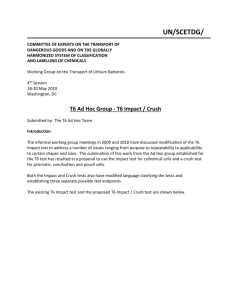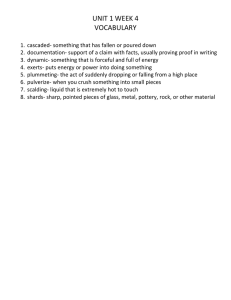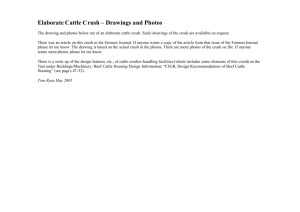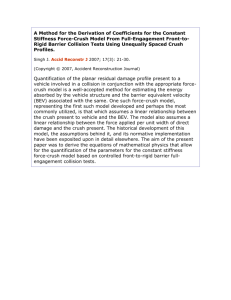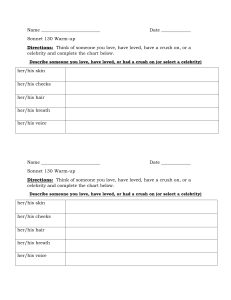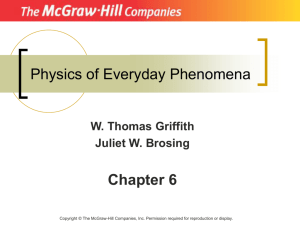Test Diagrams
advertisement
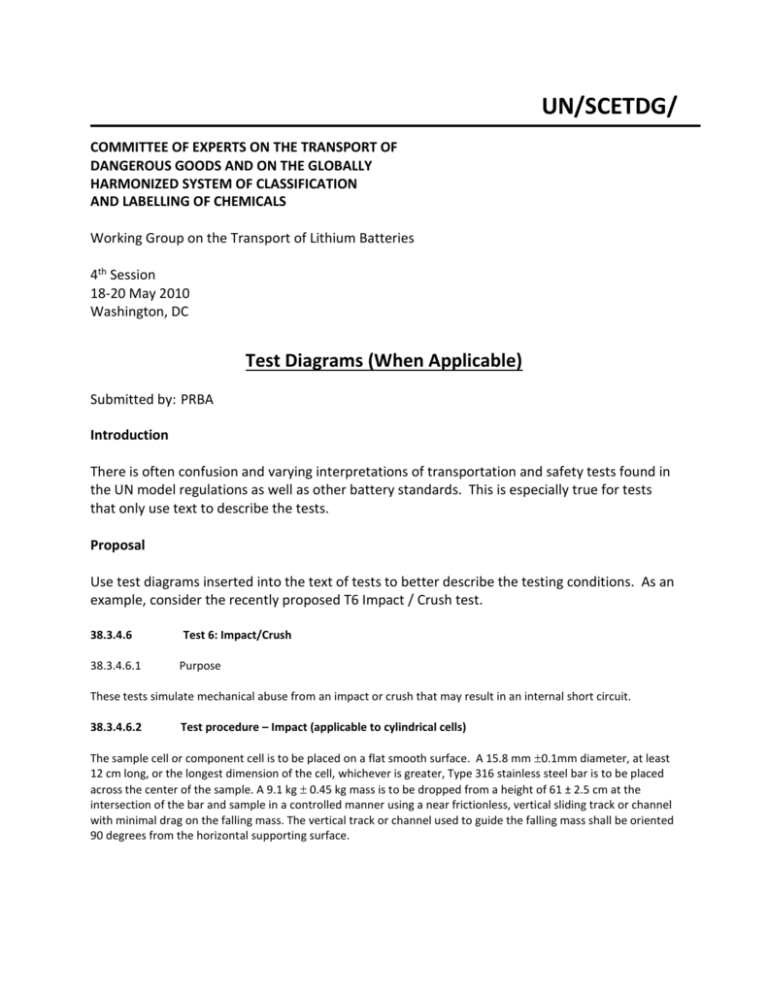
UN/SCETDG/ COMMITTEE OF EXPERTS ON THE TRANSPORT OF DANGEROUS GOODS AND ON THE GLOBALLY HARMONIZED SYSTEM OF CLASSIFICATION AND LABELLING OF CHEMICALS Working Group on the Transport of Lithium Batteries 4th Session 18-20 May 2010 Washington, DC Test Diagrams (When Applicable) Submitted by: PRBA Introduction There is often confusion and varying interpretations of transportation and safety tests found in the UN model regulations as well as other battery standards. This is especially true for tests that only use text to describe the tests. Proposal Use test diagrams inserted into the text of tests to better describe the testing conditions. As an example, consider the recently proposed T6 Impact / Crush test. 38.3.4.6 38.3.4.6.1 Test 6: Impact/Crush Purpose These tests simulate mechanical abuse from an impact or crush that may result in an internal short circuit. 38.3.4.6.2 Test procedure – Impact (applicable to cylindrical cells) The sample cell or component cell is to be placed on a flat smooth surface. A 15.8 mm 0.1mm diameter, at least 12 cm long, or the longest dimension of the cell, whichever is greater, Type 316 stainless steel bar is to be placed across the center of the sample. A 9.1 kg 0.45 kg mass is to be dropped from a height of 61 ± 2.5 cm at the intersection of the bar and sample in a controlled manner using a near frictionless, vertical sliding track or channel with minimal drag on the falling mass. The vertical track or channel used to guide the falling mass shall be oriented 90 degrees from the horizontal supporting surface. The test sample is to be impacted with its longitudinal axis parallel to the flat surface and perpendicular to the longitudinal axis of the 15.8 mm 0.1mm diameter curved surface lying across the centre of the test sample. Each sample is to be subjected to only a single impact.

